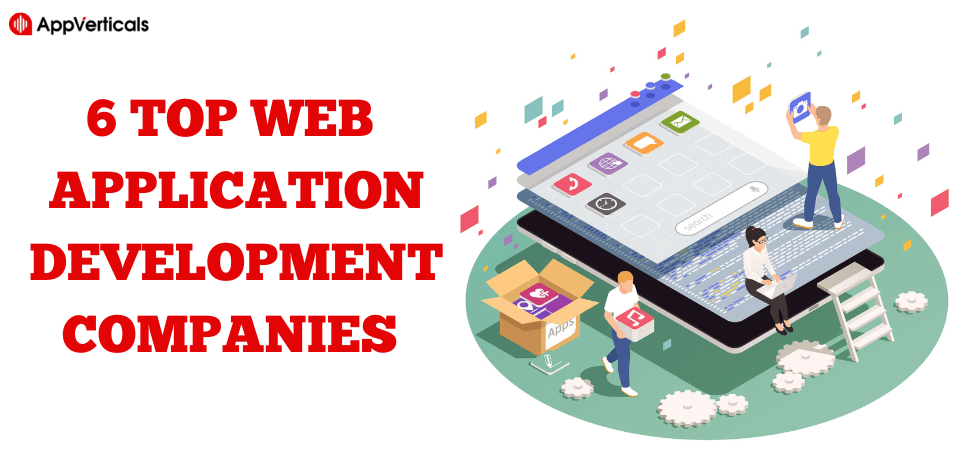A solid mobile development plan is essential if you want the mobile application to be a vital component of your company processes, attract downloads, or earn income. Sadly, not every business owner begins the process of designing and developing a mobile app with a sound mobile app development plan. We will explain how to construct the ideal mobile app development strategy in 2023 by providing the best advice and tricks.
Communication has become quick because mobile apps are quick, entertaining visually, interactive, and easily connected with other mobile capabilities. The use of smartphones has permanently altered life. Consumers using smartphones, tablets, and wearable devices to obtain information have grown. People prefer mobile apps for data management and storage, online purchasing, socializing, navigation, and other uses.
Mobile apps provide consumers with enormous value and convenience worldwide, including social networking, online shopping, gaming, and productivity tools. The mobile app development market has grown extremely competitive due to increased demand. Developers must use clever and successful tactics to stand out from the crowd and produce successful apps. This blog will look at a few critical tactics for productive mobile app development.
Mobile App Strategies for Development
Perform Market Research
There can be no action without research. Conduct rigorous market research before your developers start creating the mobile application. By enabling you to identify the qualities that your product needs and assisting you in making decisions, it will help you lower risk. Use various tools to better understand your market and audience, such as Attest, Google Trends, Social Mention, and Answer the Public. As users of your mobile application, collect information on the difficulties and wants that are unique to them. Your aim should be to use your app to help them with their problems.
Focus On User Experience
Users are always the main focus of mobile apps because their involvement and user experience are key factors in whether they are successful. The value of a mobile app depends less on its functionality and more on how well users interact with it. Several issues, including slow connectivity, a lousy user interface, and poor program performance, impact the user experience. To create a successful app with an engaging user experience, developers, quality control, and designers in a mobile app development business must work together completely.
Contrarily, user engagement is just as critical as user experience. Comprehending your end users ‘ needs is a crucial initial step to promoting user engagement. Top mobile app development company can gain insight into how users interact with an app using mobile apps with built-in analytics. Mobile app developers can identify any data or use issues in advance if testing and analytics are carried out during the design and deployment phases. This will increase the likelihood of their app succeeding in the mobile app market.
Agile Development Methodology
Software development using the agile technique is fluid and iterative, emphasizing adaptation and teamwork. The development process is divided into shorter, more manageable tasks called “sprints,” which usually span one to four weeks. A cross-functional team completes particular features or functions during each sprint. Continuous improvement, feedback, and communication are the three pillars of agile development. Throughout the project, it promotes frequent communication between developers, testers, designers, and stakeholders. Regular gatherings, such as sprint reviews and daily stand-ups, guarantee everyone is informed and on the same page. Agile development allows teams to react swiftly to shifting requirements, priorities, and market situations. They deliver functional product increments after each sprint, encouraging customer happiness. This method reduces the possibility of later, expensive rework by allowing stakeholders to express feedback early in the development process.
An Overview of Agile Development
Choose The Right Stack
Mobile app development company should understand the operating system they are targeting before continuing with the app development process. To assess the nature of tech stacks, the developers also require knowledge of the devices your program intends to run on. If your app is designed for Android users, its developers will likely utilize Java or Kotlin and the platform’s native SDK and frameworks to create it. The same is true for the iOS operating system. You should, in essence, be well-versed in mobile app development platforms.
To choose the right tech stack, you must also be clear on whether you want to create a web or mobile app. This will help streamline the entire process of developing your app and make it simpler for the developers.
Cross-Platform Compatibility
An application’s ability to run without problems across several operating systems and devices is called cross-platform compatibility in mobile app development. Cross-platform compatibility has become crucial to reach a wider user base and increase app success, given the variety of mobile platforms available, including iOS, Android, Windows, and others. Using frameworks and technologies that enable code to be shared and run on several platforms is necessary when creating cross-platform apps. Developers may write a single codebase that can be delivered on iOS and Android devices thanks to popular cross-platform development tools like React Native, Flutter, and Xamarin.
Cross-platform interoperability has many advantages. Since developers don’t have to create separate versions for each platform, it cuts down on development time and expenses. Additionally, updates and bug fixes may be made more quickly since all platforms can be made concurrently. Regardless of the platform, keeping a single codebase guarantees uniformity in the user experience, design, and functionality. Cross-platform programming might be constrained in some ways, though. The most recent platform-specific features or performance enhancements available in native development might not be accessible. Compatibility issues with different devices and screen sizes may also complicate complex apps.
Enhance Data Security
While using the apps, users don’t consider data security and privacy. Thus, developers must take proactive steps instead of responding to data leaks. Security issues such as insecure data storage, inadequate server-side controls, unintentional data leaks, faulty cryptography, etc., could occur when creating mobile apps. Businesses handling money and sensitive data avoid cloud systems due to security threats. Understanding the many types of data and user security methods, tactics, and practices utilized in service providers’ data centers is crucial before implementing cloud-based development platforms. Most software applications that deal with private user information have a connection to the server. It would help if you managed any unencrypted transmission via an unencrypted Wi-Fi connection. Users’ sensitive data may be at risk if the proper SSL libraries aren’t utilized. This degree of security is supplied via encryption and SSL (Secure Socket Layer) certificates from trusted vendors.
Crafting Your Ideal Mobile App/Experience Starts Here!
Ready to elevate your business? Your custom app is just a click away.
Yes Let’s goLeverage Cloud Base Technologies
The era of cloud computing is here, and businesses may also benefit from this technological advancement. Because of its agility and flexibility, cloud computing can help you compete better in the market for developing mobile applications. Since it allows businesses to create applications in the cloud without having to set up complicated infrastructures, it can potentially reinvent the engineering of mobile apps. A cost-effective solution is provided by cloud computing, together with value addition. Startups can use cloud-based development tools to create mobile applications from anywhere worldwide.
Create MVP
When designing any application, starting with a minimally functional prototype you can test with users is best. Making an MVP takes little time and provides development teams with invaluable user feedback. They can use this input to accomplish more than identify the functionality that the application needs. Responding to that criticism informs the final product’s mobile app strategy. These tests also assist developers in identifying security feature flaws. This can aid in figuring out how to leverage user data in the application to enhance the user experience. There are multiple benefits of MVP for app development that can help you to boost your business revenue. MVP in agile development will help you in lower risks and more productivity to save your time and money.
Continuous Testing and Quality Assurance
A high-quality and reliable product is delivered through the software development lifecycle’s crucial components of continuous testing and quality assurance (QA). Unlike traditional testing, which occurs after development, continuous testing incorporates testing and QA activities throughout the development process. Continuous testing’s main objective is to spot errors and problems early on, enabling quick correction and avoiding the buildup of flaws.
This application development strategy comprises automating test cases, enabling quicker execution and repetitive testing, which provides developers with faster feedback. Each code change is automatically tested before deployment thanks to the frequent integration of continuous testing into the Continuous Integration/Continuous Deployment (CI/CD) pipeline. Improved software quality, shorter time to market, and higher customer satisfaction are all benefits of continuous testing and quality assurance. Early problem-solving allows developers to offer a reliable product without incurring costly rework. Continuous testing ensures that new additions or updates do not cause unanticipated issues, maintaining a seamless user experience. Collaboration between developers, testers, and stakeholders is essential for efficient continuous testing implementation. In addition to fostering a culture of continuous improvement, this encourages a shared responsibility for quality.
Crafting Your Ideal Mobile App/Experience Starts Here!
Ready to elevate your business? Your custom app is just a click away.
Yes Let’s goConclusion
The creation of mobile apps is a complex process that requires careful planning. You may develop mobile apps that match user expectations and fly to new heights of success in the cutthroat app industry by conducting rigorous research, concentrating on user experience, maximizing performance and security, and continuously improving through agile development. To stay ahead in this constantly changing market, be versatile, receptive to criticism, and relentlessly innovative. Your app can flourish in the mobile app market and become a valuable resource for users with the appropriate approaches, perseverance, and innovation.
Choosing the top mobile app development company in Dallas to create your app with the newest technology quickly is the final crucial mobile app strategy. You may have guessed where we were alluding to AppVerticals. To develop native Android and iOS mobile applications, we have a strong team of the best and most experienced business strategists, designers, developers, and testers. Our team has collaborated with several people, businesses, and startups to turn their visions for mobile applications into reality.








